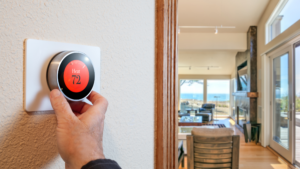Eco-Friendly Home Buying For Today’s Homebuyer
In a world increasingly focused on sustainability, the allure of eco-friendly living has never been more prominent. Making the decision to buy an eco-friendly home is a significant step towards not only embracing a sustainable lifestyle but also making a long-term investment in both your financial and environmental future. This comprehensive guide is designed to walk you through the critical aspects of choosing an eco-friendly home, helping you to weigh the benefits, consider the practicalities, and reflect on the alignment with your personal values and lifestyle. From understanding the upfront costs to gauging the long-term benefits, we delve into what it really means to commit to an eco-friendly home and how to navigate this important decision-making process.
Benefits of Choosing an Eco-Friendly Home
1. Reduced Environmental Impact
Eco-friendly homes are built with the goal of reducing the overall impact on the environment. This is achieved through various means:
- Sustainable Materials: These homes often utilize recycled, reclaimed, or sustainably sourced materials. This approach reduces deforestation and waste, leading to a smaller environmental footprint.
- Energy Conservation: By design, they minimize energy consumption. Features like green roofs, thermal windows, and proper orientation for natural light reduce the need for artificial heating, cooling, and lighting.
- Water Efficiency: Implementations like rainwater harvesting systems and low-flow fixtures reduce water usage, helping to conserve this vital resource.

2. Energy and Cost Efficiency
One of the most tangible benefits of eco-friendly homes is their efficiency in energy use, which translates into cost savings:
- Solar Panels: Many eco-friendly homes incorporate solar panels, which convert sunlight into electricity, reducing reliance on grid power.
- High-Efficiency Appliances: These homes often come equipped with appliances that use less electricity and water.
- Superior Insulation: Effective insulation is key in minimizing heat loss in winter and heat gain in summer, leading to lower heating and cooling costs.
3. Healthier Living
The design of eco-friendly homes also prioritizes the health and well-being of its occupants:
- Improved Air Quality: Use of low-VOC (Volatile Organic Compounds) paints, sealants, and materials ensure that indoor air is free from harmful chemicals.
- Natural Light and Air Circulation: Large windows and thoughtful design promote the flow of natural light and air, creating a more pleasant and healthy living environment.
- Non-Toxic Materials: From flooring to countertops, eco-friendly homes often use materials that are free from toxic chemicals and allergens.
4. Increased Resale Value
As environmental awareness grows, so does the demand for eco-friendly homes:
- Market Trends: With more buyers seeking sustainable living options, these homes are becoming increasingly desirable.
- Future-Proofing: Eco-friendly homes are often seen as being ahead of the curve in terms of environmental standards, making them a sound investment for the future.
5. Long-Term Savings
The initial investment in an eco-friendly home is often offset by the savings incurred over time:
- Reduced Utility Bills: The combination of energy-efficient appliances, solar panels, and superior insulation leads to significantly lower utility bills.
- Durability: Many of the materials used in eco-friendly homes are not just sustainable but also more durable, leading to lower maintenance and repair costs.
- Incentives: Homeowners may benefit from tax incentives, rebates, or reduced mortgage rates for eco-friendly home features. Contact the Roller Mortgage Team to learn more.
Considerations for Purchasing an Eco-Friendly Home
1. Upfront Costs
Investing in an eco-friendly home often means a higher initial price tag, due to several factors:
- Sustainable Materials: Materials like bamboo flooring, recycled glass countertops, or sustainably harvested wood tend to be more expensive than conventional materials.
- Advanced Technologies: Incorporating technologies like solar panels, high-efficiency HVAC systems, or smart home features can add to the cost.
- Design and Construction: The specialized design and construction techniques required for building eco-friendly homes can also contribute to higher costs.
2. Availability
The availability of eco-friendly homes varies greatly depending on the location:
- Urban vs. Rural Areas: In urban areas, there might be more modern eco-friendly apartments and condos, while rural areas might offer more opportunities for homes with features like solar panels or geothermal systems.
- Market Development: Some regions have more developed markets for eco-friendly homes, with a greater number of options and experienced builders.
- Local Regulations and Incentives: The presence of supportive local policies and incentives can influence the availability and features of eco-friendly homes in a given area.
3. Maintenance
Maintaining an eco-friendly home can present unique challenges and opportunities:
- Specialized Systems: Features like solar panels or rainwater harvesting systems may require specific maintenance or expertise to keep them functioning optimally.
- Landscaping: Eco-friendly homes often have sustainable landscaping that requires different care than traditional lawns, such as xeriscaping or native plant gardens.
- Emerging Technologies: As these homes can include the latest environmental technologies, staying informed about how to maintain and upgrade these systems is important.
4. Lifestyle Fit
An eco-friendly home should align with your lifestyle and values:
- Adaptation to Technology: The technology and systems in eco-friendly homes, like smart thermostats or greywater systems, may require a learning curve and adaptation in daily habits.
- Community Engagement: Living in an eco-friendly home often goes hand in hand with a broader commitment to sustainability, which can include community involvement or lifestyle changes like reduced waste or increased recycling.
- Long-Term Commitment: Eco-friendly features often deliver their greatest benefits over the long term, so it’s important to consider if your current and future lifestyle aligns with staying in one place long enough to reap these benefits.
Critical Questions on Eco-Friendly Home-buying: A Self-Reflection Decision-Making Tool
1. Managing the Extra Initial Cost
- Financial Planning: Assess your current financial situation and future income stability. Can you afford the higher upfront costs without compromising other financial goals?
- Loan and Mortgage Options: Investigate eco-friendly home loan options, which may offer better rates or terms.
- Long-Term Financial Benefits: Consider if the long-term savings in utility bills and potential tax incentives can balance out the initial higher investment.
2. Importance of Long-Term Sustainability and Efficiency
- Personal Values: Reflect on how much value you place on reducing your carbon footprint and contributing to environmental preservation.
- Future Planning: Think about your future needs and how an eco-friendly home fits into those plans. Will the energy efficiency and sustainability features benefit you in the long run?
- Community and Global Impact: Consider your role in the broader community and global efforts towards sustainability.
3. Flexibility with Location Preferences
- Eco-Friendly Hotspots: Some areas might have more eco-friendly homes available. Are you willing to relocate to these areas?
- Compromise and Priorities: If eco-friendly options are limited in your preferred area, think about what compromises you are willing to make. Is the location more important than eco-friendly features?
- Work and Lifestyle Impact: How will a change in location affect your daily commute, social life, and access to amenities?
4. Viewing as a Long-Term Investment for Future Resale
- Market Trends: Research the trends in the real estate market regarding eco-friendly homes. Are they becoming more sought after?
- Property Value Over Time: Consider the likelihood of the property maintaining or increasing its value over time, especially with the growing emphasis on sustainability.
- Exit Strategy: Have a clear plan for the future, should you decide to sell the property. How attractive will its eco-friendly features be to potential buyers?
Moving Forward with Eco-Friendly Home Buying
1. Conduct Thorough Research
- Local Market Insights: Dive deep into the local real estate market to understand the availability and pricing of eco-friendly homes.
- Online Resources and Forums: Utilize online platforms, forums, and social media groups dedicated to eco-friendly living for firsthand owner experiences and advice.
- Government and Non-Profit Resources: Check out resources provided by government and non-profit organizations for information on sustainable housing. https://www.hud.gov/program_offices/economic_development/sustainable_housing_initiative
2. Seek Expert Advice
- Specialized Real Estate Agents: Look for agents who specialize in eco-friendly properties. They can provide valuable insights and access to a broader range of options.
- Financial Advisors: Consult financial experts familiar with eco-friendly housing for advice on loans, mortgages, and potential tax benefits.
- Home Inspectors with Green Expertise: Engage a home inspector with experience in eco-friendly homes to ensure that the property meets certain standards and functions efficiently.
3. Look for Certifications
- Understanding Certifications: Familiarize yourself with different eco-friendly certifications like LEED, Energy Star, or Passive House. Each represents different standards and levels of sustainability.
- Verification of Standards: Certified homes have been verified to meet specific environmental and energy efficiency standards, providing reassurance about the quality of the eco-friendly features.
- Impact on Resale Value: Recognize that certifications can be a selling point in the future, potentially increasing the home’s marketability and resale value.
Choosing an eco-friendly home is more than just a purchase; it’s a commitment to a lifestyle and a statement about your values. As you ponder the benefits of reduced environmental impact, energy and cost efficiency, healthier living, and potential long-term savings, it’s crucial to balance these with practical considerations such as upfront costs, availability, maintenance, and lifestyle fit. Remember, conducting thorough research, seeking expert advice, and looking for certifications are key steps in making an informed decision. This journey towards eco-friendly homeownership is not just about finding a place to live—it’s about investing in a future that aligns with your vision of sustainability and responsibility. As you move forward, let this guide be your compass, leading you to a home that resonates with your aspirations for a greener, more sustainable world.





